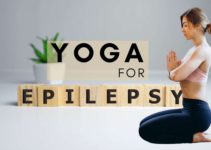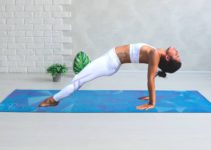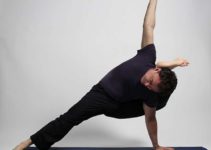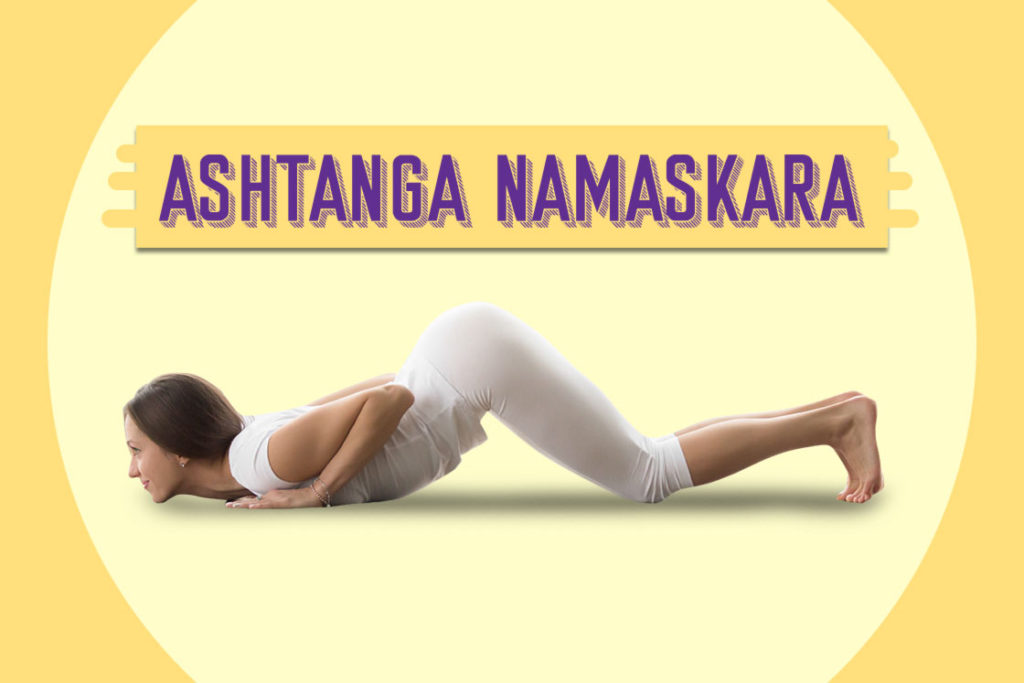
| Sanskrit Pronunciation | Ashtanga Namaskara (aash-tanh-GAH namah-SKAR-ah) |
| Meaning | asta = eight / anga = limb / asana = pose |
| Pose Type | Prone pose |
| Pose Level | Beginner |
| Anatomy | Biceps, feet soles, wrists, quads, and hip flexors |
| Other Names | Eight Limbed Pose, knees chest and chin pose, Eight limbed salutation |
Ashtanga Namaskar is a beginner level eight-limbed pose, which also acts as a transition pose at 6th position in Surya Namaskara. By practicing this pose the practitioners began to develops necessary strength for the upcoming balancing pose in yoga practice.
However, Ashtanga Namaskara is an alternate pose to the Chaturanga Dandasana, which requires good strength in the wrist to support the posture. Therefore, practitioners can develop their strength from the very basic level by regular practice of Ashtanga Namaskara.
Apart from wrist strengthening, this asana widely practices for gaining a flexible spine that supports the brain at its top. Therefore, adds to better mental and physical coordination.
Meaning
In Sanskrit, ‘Asht’ means ‘eight’, ‘anga’ means ‘Limbs’ and ‘Namaskara’ means ‘Bowing down’. Therefore, Ashtanga Namaskara is the pose in which eight body parts, both feet, both knees, both hands, chest, and either the chin or the chest are in contact with the floor.
Namaskara, in Ashtanga Namaskara, is a traditional way of greeting, bowing, or paying respect to the elders, gurus, or idols in Hinduism. However, Ashtanga Namaskara is one of the sequences of the Surya Namaskara (Sun Salutation), which is performed to pay respect to the Hindu deity Sun.
Sun is the ultimate source of light and energy on earth so by bowing with our eight limbs touching the floor. The practitioner asks for the blessing, strength, and energy going to be required throughout the Yoga practice.
Practice Guide to the Ashtanga Namaskara
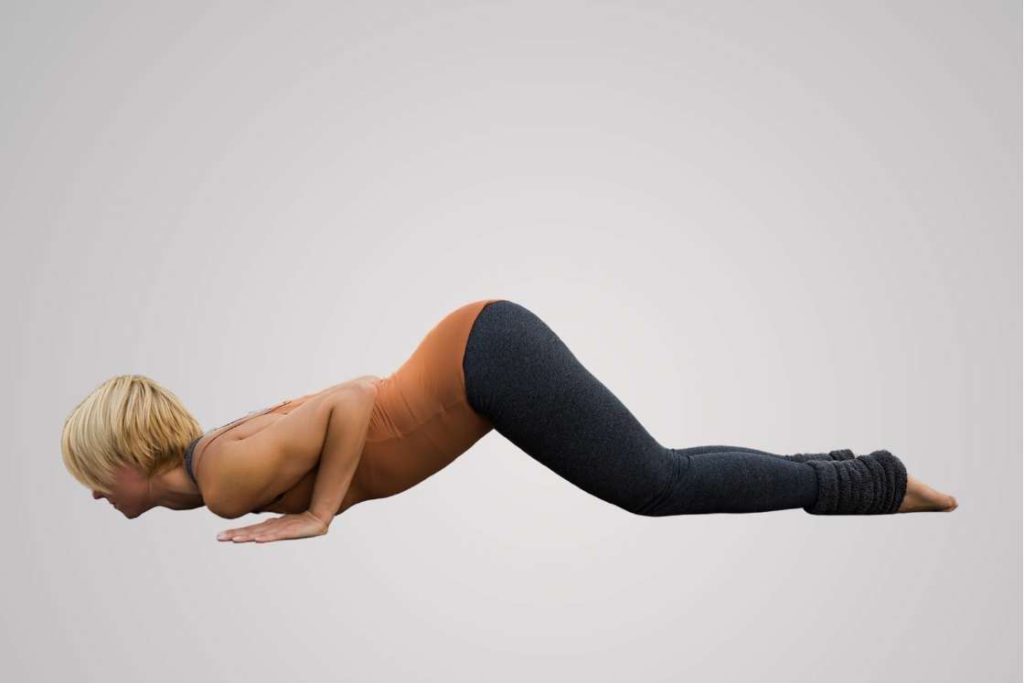
Contraindications
- Practitioners with Carpal Tunnel syndrome should avoid doing this asana. The compression over the median nerve could cause weakness and numbness in the hand while practicing.
- Women with the pregnancy period after the first trimester should refrain from doing Ashtanga Namaskara.
- Practitioners who have undergone any kind of surgery (especially abdominal) should avoid doing this asana. Holding requires the involvement of core muscles, which might be harmful to the practitioners.
- One should also avoid the Ashtanga Namaskara practice if there is a case of wrist, neck, and shoulder injury. Pressure during the asana practice could worsen the previous condition.
Preparatory Pose
- Shalabhasana (Locust Pose)
- Garudasana (Eagle Pose)
- Phalakasana (Plank Pose)
- Marjari Asana (Cat Pose)
How To Do Ashtanga Namaskara
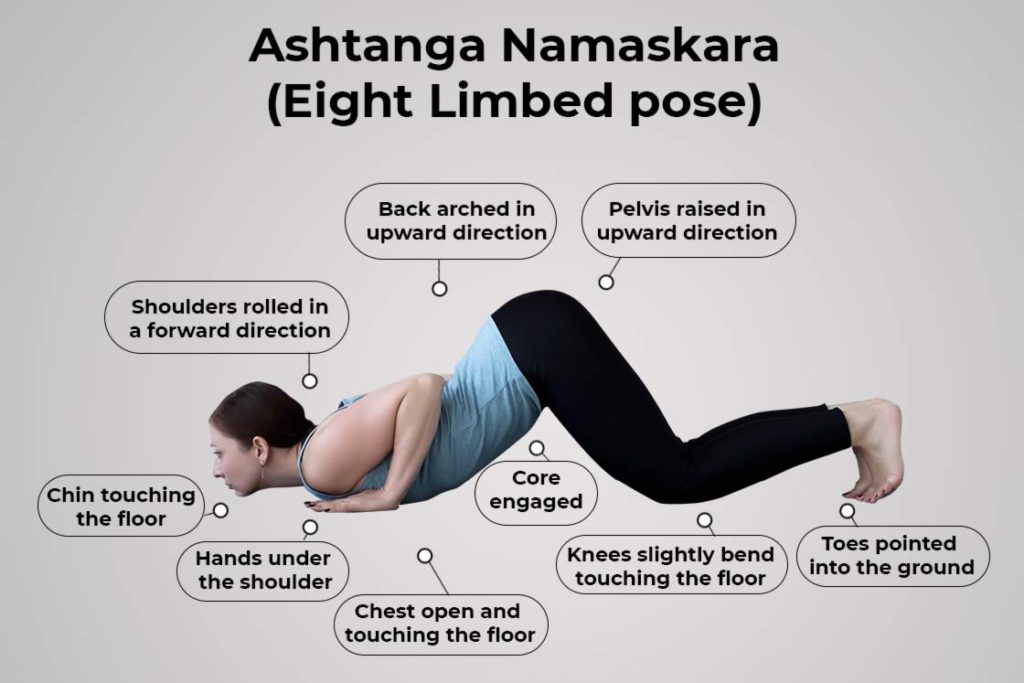
- Begin by coming into the Plank pose. Your palms well stretched and deep-seated. Your toes firm on the floor and heels apart.
- Now, exhale and drop your knees, chest down and shoulder to the floor. While coming down engage your core muscles to slowly acquire the posture.
- Your elbows should be in the vicinity of the ribs. The shoulder should be in between the palms and are rolled up forward to allow the expansion of the chest.
- From here, raised the hips and let your abdomen and mid-torso engage completely so that, either your chin or forehead touch the floor.
- Assure that your belly is pulled in, with a slight upraised arch in your entire back. Your body should be on both toes, both knees, both hand,s, and either the chin or the forehead, respectively.
- Maintain here and breathe slowly for few minutes or as per the comfort. Then inhale and slowly raised your chin, chest, shoulder, leave the belly and knees up into the Plank pose.
Beginner’s Tips
- Beginners with basic body structure can initiate Ashtanga Namaskara practice with Cat pose, which requires less effort than Chaturanga Dandasana to avoid any mishap.
- Practitioners with stiff shoulders might face some problems in opening the chest. So, one should not exaggerate the rolling of the shoulder beyond theirs.
- To have a perfect or praise arch in the entire back the point of flexibility, which would be unavailable to the newly enrolled practitioner. Therefore, By reducing the distance between the pelvis and floor one can practice Ashtanga Namaskara.
- In case of touching the floor through the chin or with the forehead, one should bend their neck. So, beginners with not that level of flexibility in the neck can simply try to touch the floor without any force.
Precautions
Ashtanga Namaskara can be practice safely by opting the following points.
- Practitioners with the condition of lower back or arthritis should not overlay stress in developing an arch in the back. It would be injurious to do so. One should listen to their body here.
- It is the normal mindset that we can do the posture in one go, but in doing that practitioners sometimes prefer to hurry. However, it could delocalize certain joints or strained some muscles. One should always dive and return, slowly, to and from the posture, respectively.
- The weight of your torso should not be supported by the chest. This could cause uneasiness in breathing. Therefore, one should allow the weight on both hands equally and the chest to just touch the floor.
- While you bring down your torso to the ground avoid swaying your elbows to the outside. Try to keep them besides the ribs. This allows necessary support to the posture.
Props and Modifications
- Lethargy or weakened abdominal muscles make it harder to hold the posture for long. So, the practitioner can place a wooden block in between the thigh. By squeezing the block one can acquire the necessary strength to hold the position. However, it also assists the core muscles to engage as per their ability.
- Individuals with sensitive knees find it hard to remain in a contact with the floor too long. So, one can place a soft blanket to reduce the inflammation during the posture.
- Practitioners having discomfort in placing chest and chin to the ground can use a piece of soft cloth in order to insulate the situation. This will shift the focus on improving the balance of the posture.
Follow Up Pose
- Bhujangasana (Cobra Pose)
- Urdhva Mukha Svanasana (Upward-Facing Dog Pose)
- Balasana (Child Pose)
- Adho Mukha Svanasana (Downward Facing Dog Pose)
Variations
There are mainly 2 variations of Ashtanga Namaskara.
1. One Legged Four Limbed Staff Pose
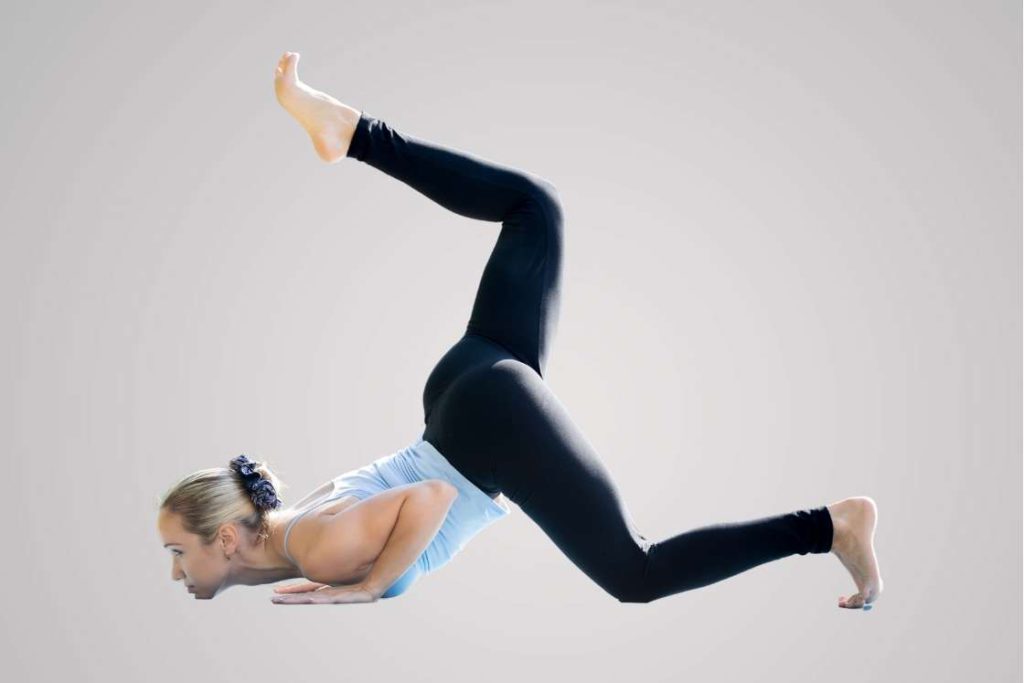
Here, four body parts are involved in maintaining the final pose with the active support of glutes, lower back, shoulder, toes and core muscles, etc. However, in Ashtanga Namaskara eight body parts either chin or forehead, chest, both hand, both knees, and both toes are involved. The back remains erect in the former while it should be arched up in the latter pose, respectively.
- Begin by coming into Adho Mukha Svanasana and then rolling your shoulder under the wrist and coming into the Plank Pose.
- Exhale to bring a 90′ angle between wrist and upper arm. Make sure the elbow and wrist be in line.
- Now, squeeze your glutes and draw the navel in to give necessary support to the pose.
- Inhale and raise your right leg by pressing the palms and toes deep into the floor. Use your hip flex and lower back muscles to support the lift of your leg.
- Remain here as long as it takes and then lowers the right leg with exhalation. Perform the same practice with the other leg as well to complete the practice.
2. Wide Legged Four Limbed Staff Pose
The point of contact with the floor is the same as the previous variation with feet place at hip-distance apart, in here. Whereas, Ashtanga Namaskara is with eight-point of contact with the floor and with an arched back that makes it complete as per its name.
- Begin by coming into any of the preparatory poses of Ashtanga Namaskara or simply with Adho Mukha Svanasana.
- Now, roll up your shoulder under the wrist to transform into the Plank Pose.
- There should also be the right angle between the upper arm and the forearm as we practice in the first variation.
- Now, inhale and spread your leg with hip-distance apart. Your upper torso is slightly raised upward than the lower one.
- Maintain the posture here for some time while shallow breathing. Afterward, decrease the space between legs with an exhale.
- Return back slowly by raising your pelvis into the initial pose and then relax.
Ashtanga Namaskara Benefits
Take a look at these 6 benefits of ashtanga namaskara.
1. Massages Abdominal Organs
Raising the pelvis in an upward direction in Ashtanga Namaskara pushes the abdominal inside while practice. Such Movement causes a massaging [efn_note] Surya Namaskar (Sun Salutation): A Path to Good Health http://rutmandal.info/wp-content/uploads/2019/01/3349-Article-Text-9248-1-10-20160731.pdf [/efn_note] effect over the abdominal organs, which improves their functioning. However, it also detoxifies them in the long run.
2. Makes Spine strong and flexible
The repetitive and regular practice of this Asana makes spine to change its shape while going and returning back from the posture. This improves the range of musculoskeletal aspect, which further tone them up. Hence, adds om to the strength of the spine.
3. Regulates Endocrine Functions
The enhanced level of physical activity in this position has a regulatory effect over the various endocrine glands [efn_note] Surya namaskar and Chandra namaskar as a preventive measure for the pre-menopausal syndrome https://www.theyogicjournal.com/pdf/2019/vol4issue2/PartE/4-2-143-707.pdf [/efn_note] of the body. This further directs glands like Pancreas, Adrenal, Thyroid and Pituitary gland, etc to secrete the required hormones so the metabolism can work in the best possible way.
4. Reduces the Possibility of Heart Attack
Regular practice of Ashtanga Namaskara strengthens the heart muscles, which encourages the coronary arteries and heart blood vessels to circulate the blood with profoundness. Therefore, reduces the chances of Heart attack [efn_note] Surya Namaskara Benefits for Physical Health https://pdfs.semanticscholar.org/a3be/b7389cc856c32e25c4b7eedf5d707659a7d4.pdf [/efn_note].
5. Strengthens Upper Body
Weight adjustment during the, diving into the pose and coming back from the pose required almost every muscles of the torso [efn_note] Most critical organs of living are housed within the torso https://en.wikipedia.org/wiki/Torso[/efn_note]. Such flow tone up the muscles and improve bone density if practiced regularly. Hence, strengthens Upper body.
6. Stimulates Chakras
Ashtanga Namaskara is one of the asanas that targets more than one chakra. Regular practice with appropriate breathing techniques under the guidance of skilled yoga teacher one can stimulate Mooladhara (Root) Chakra, Manipura (Solar Plexus) Chakra, and Swadishthana (Sacral) Chakra. Each one has its ample outcomes.
Conclusion
Ashtanga Namaskara is one of the sequence of Sun Salutation, which when practiced regularly improve the aspects of physical, mental and emotional Being.
However, by opting some changes in the base pose one can also raise his/her level and can practice variation given above.
Hence, Ashtanga Namaskara is an overall health and wellness posture to be practiced.
